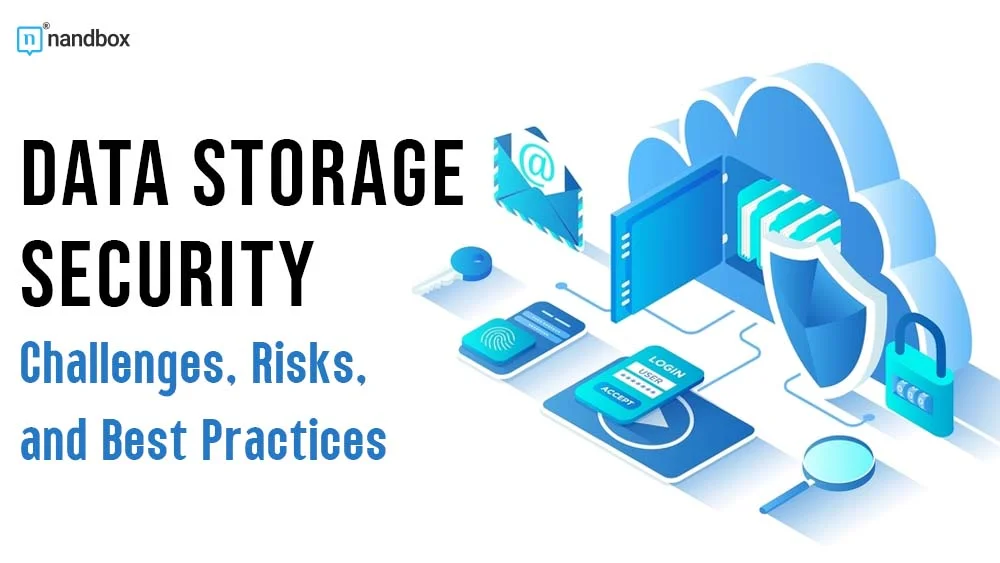In the digital age, data is recognized as one of the most precious commodities for organizations across all sectors. Therefore, there is nowhere more vital than to protect it. Data security refers to the process of protecting digital data from unauthorized access, corruption, or later becoming corrupt. This reliance on an enormous amount of sensitive data puts businesses in a vulnerable position. Also, having information about some storage security challenges is crucial to prevent loss of trust, compliance breaches, or operational disruptions from happening.
What Is Data Storage Security?
Data protection and security refer to the various practices, measures, or protocols against unauthorized access from third-party sources. The very nature of data protection encompasses the technical enforcement methods for securing storage systems and/or enterprise-class organizational standards and practices that define accessibility, process management, etc. Data storage security ensures that only authorized users and systems can access, modify, or delete the stored information and safeguards against any possible breaches leading to a threat to confidentiality, integrity, and availability.
Data storage security also involves encryption of data at rest and in transit, access controls, backup plans, and disaster recovery steps. This is to protect the security of the stored information from secure media storage. Depending on the type, this can include GDPR, HIPAA, or PCI-DSS compliance across geographies.
Why It Matters
The security of data stores is one thing that cannot be stressed enough. Data helps businesses make intelligent decisions, offer customers more personalized experiences, and drive operational efficiency. This data can be devastating if a breach or loss occurs. The consequences are often financial, legal, reputational, and consumer confidence-related.
Additionally, as cloud computing and remote storage solutions become more commonplace, the attack surface available to attackers grows. So, securing access points with strong data storage security implementations is becoming paramount. With proactive data storage security, organizations can better protect their information and reduce the risk of breaches. Thereby avoiding costly business disruptions, not to mention regulatory penalties. Platforms like Sentra’s data security support these efforts by helping businesses secure data across cloud environments with built-in discovery, classification, and compliance tools.
The Challenges of Data Storage Security
Achieving effective data security storage presents several challenges:
Complexity:
IT environments have different storage options, with parts of critical data stored on-premises and various offerings from cloud vendors, including hybrid solutions for a cost-effective combination. Security management for these various platforms needs a holistic solution.
Compliance:
Different countries and industries may impose additional restrictions that justify special data protection standards. It is difficult to manage if you need a baseline level of compliance while still operating efficiently.
Data Growth:
Huge data volume increases create a storage management and security nightmare. It needs to be scalable to accommodate changing storage requirements while maintaining security.
Emerging Threats:
The organization is targeted by sophisticated cyber attacks, such as ransomware attacks, phishing emails, or insider threats, increasingly hitting cloud and on-premises stored data.
Top Risks to Data Storage Security
Understanding the risks helps determine where security resources should be spent:
- Unauthorized Access: Weak access controls or leaked and deployed credentials can enable unauthorized users to access sensitive information.
- Data Breaches: Data breaches result in leaks of sensitive information that expose organizations to financial and reputational harm.
- Data Loss: Failing to back up data and store important holds in the memory media may cause irreversible loss of valuable information.
- Ransomware: Ransomware is becoming more rampant daily because targeting makes this particular malware encrypt the data of a target, demanding payment for its release, disrupting operations, and causing financial loss to an organization.
- Insider Threats: Employees or contractors mistakenly or purposefully leverage their privileges and compromise your data’s security.
The Role of Technology in Enhancing Data Storage Security
Technology has an important role to play in improving data storage security. Integrating advanced solutions and tools, such as Hevo Data, is one of the most effective ways to mitigate data breaches more effectively. A few of these notable technologies are as follows:
Encryption
With modern encryption, encrypted data remains incomprehensible if intercepted. Encrypt data both at rest and in transit.
Artificial Intelligence and Machine Learning
AI and ML could detect unusual patterns from everyday activities that can hint towards security threats already circulating. We can use these technologies to establish a system capable of fast detection and response to any deviations, effectively closing the vulnerability window.
Multi-Factor Authentication (MFA)
MFA provides another safety net; MFA necessitates an extra layer of verification before allowing access. This can eliminate the chances of unauthorized access.
Blockchain
Blockchain technology can improve data integrity and transparency by ensuring the identity of participants in a secure and unchangeable account (Ledger) configuration for all related transactions based on this list as it is.
Recommendations and Best Practices
To reduce risks and improve the security of data storage, organizations should adhere to these best practices, including:
Data Encryption:
Encrypting the data at rest and in transit with strong encryption algorithms so that only authorized users can access it.
Access Control:
Utilize the principle of least privilege and frequently check user access permission to guarantee safe data only for the right users.
Regular Backups:
Regular backups have secure backups from critical data and tested restoration procedures that ensure the risk of recovering information at any time, such as failure or recovery attacks.
Patch Management:
Keep systems and applications current with the latest security patches to lower vulnerabilities that are easy targets for known adversaries under standard operating practices. Patch management is a crucial practice that ensures vulnerabilities are addressed promptly, reducing the risk of exploitation by cyber threats.
Security Awareness Training:
Educates employees on best practices for data security, how to avoid phishing attempts, and how to securely maintain the integrity of sensitive information processes.
Incident Response Plan:
Apply an incident response plan to articulate comprehensive planning that will let you respond quickly after data breaches or security incidents.
Compliance with Regulations:
Source updates to regulatory requirements in your industry and make sure that you exercise data protection principles proactively.
Conclusion
In conclusion, cloud data security is fundamental to the operation of all enterprises today. Arm yourself with an understanding of data storage security challenges, risks, and best practices so that you can take active steps to secure your valuable data assets today. Fully-fledged security processes protect them against most risks, increase customer trust, and help maintain regulatory compliance and (considering an increasingly interconnected world) business continuity. Given the continued evolution of threats, it is necessary to remain vigilant and adaptable when investing in security technologies and best practices for securing data storage over time.





